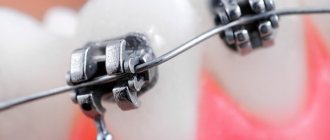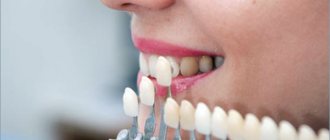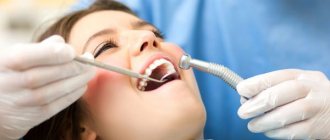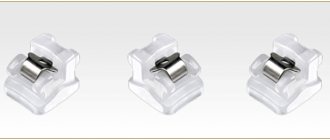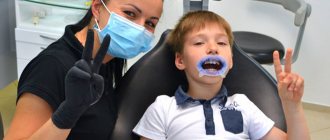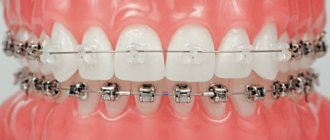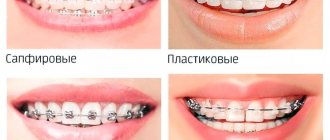Beautiful, straight teeth are the dream of many. Currently, the most well-known way to straighten teeth involves wearing braces. Despite the large selection of modern brace systems (aesthetic, comfortable), there are many patients who want to avoid meeting with them and find a replacement.
All the pros and cons of the systems
In terms of their functionality, braces can cope with most malocclusions. Only in the most severe cases do doctors recommend surgery .
Most often, structures are installed in the following pathological conditions:
- projecting or recessed units;
- large interdental spaces;
- crowding;
- deployed position of teeth;
- crossing of the jaws.
Wearing the braces system is quite comfortable, and treatment with its use results in excellent results.
An important advantage of the design is that there is no need for frequent visits to the orthodontist for corrective procedures that cause discomfort and pain.
The system can be worn as long as the treatment result fully satisfies the patient’s wishes.
Modern materials and technologies make it possible to create invisible structures, which significantly increases the aesthetic value.
Despite a number of positive characteristics, braces have their disadvantages:
- the presence of a foreign object in the oral cavity;
- decreased smile aesthetics (regarding metal structures);
- dryness of the oral mucosa (only in the first month of wearing);
- difficulties in maintaining proper hygiene;
- risk of injury (biting, rubbing);
- pronunciation problems in the first stages of treatment;
- the need for nutritional correction;
- long period of defect correction;
- costs for system installation and maintenance.
Medical absolute restrictions also become the reason for refusing braces. Alternative methods for correcting dentoalveolar anomalies are resorted to in the presence of the following contraindications:
- tuberculosis;
- HIV infection, AIDS;
- chronic dental diseases;
- mental disorders;
- oncology;
- osteonecrosis of the jaw or abnormal development of the joint;
- grinding of teeth during night sleep;
- partial edentia with the absence of a large number of units;
- the presence of implanted implants at the site of the anomaly;
- alcoholism, drug addiction.
Carious lesions, bacterial plaque and smoking habits are temporary limitations. After treatment of caries, professional teeth cleaning and complete cessation of tobacco products, doctors decide in favor of installing the structure.
For reference! Metal braces can cause allergic reactions in the body, which are manifested by the development of galvanosis. With such a clinical picture, the system is removed and an option made of hypoallergenic materials is selected.
Bracket systems
However, veneers are not able to fully replace braces. They correct only minor defects and imperfections.
Linings are not able to adhere to:
- abnormal bite,
- large trema and diastema,
- slow process of teething and curvature of dental groups.
These complex diseases require orthodontic treatment, which involves the use of braces. Only they will make the smile line correct and straighten the teeth that are in a checkerboard pattern. Braces can be installed at any age. But before installing them, it is necessary to treat the teeth and gums, as well as the bones of the dentofacial apparatus.
Braces are special brackets through which a thin arch made of nickel or titanium is threaded. The arch is able to “remember” shapes and gradually tightens and aligns the dentition. Treatment with braces lasts approximately two years, and then a retention period begins, when the brace systems are replaced with special plates of a simpler and more comfortable design.
Masking defects with veneers
Today, you can correct an imperfect bite in just a few days. This can be done with the help of veneers - porcelain or ceramic onlays that replace or disguise the outer layer of teeth.
Veneering is the fastest technology that allows you to effectively hide diastemas and other defects.
Indications:
- yellowing or darkening of the enamel of the front teeth;
- extensive damage to the protective shell of the elements;
- fluorosis;
- large interdental spaces in the anterior region.
Important! Veneers are unable to disguise crowding, fangs and many other anomalies of the dentofacial apparatus.
Contraindications:
- carious lesions on the palate;
- bruxism;
- intensive loss of enamel;
- severe malocclusion;
- absence of several molars in the dentition;
- practicing power contact sports.
The installation of aesthetic plates was distinguished by a number of positive characteristics:
- long service life with quality care;
- the possibility of restoring the natural whiteness of teeth;
- eliminating the problem in two visits to the doctor;
- high level of aesthetics;
- color retention even after eating food that is colored.
Experts include the following disadvantages:
- the need to prepare teeth for veneers;
- refusal of rough foods;
- the need for frequent visits to the clinic to monitor the integrity of the onlays and the condition of the teeth underneath them.
Remarkable! Veneers are not restorative products that can restore the anatomically correct position of the incisors. They are only capable of masking visible enamel flaws and gaps between teeth.
Reasons for loss of torque in braces and the basis for its selection.
Come here to find out why springs are installed on braces.
At this address, find out whether the enamel deteriorates after removing braces.
Using Trainers
Trainer is an orthodontic device for the correction of simple malocclusions in children and adults. The product is made in the form of a silicone mouthguard in a universal size.
The work of the structure is aimed at relieving excess tension from the muscular structures of the dental system, straightening the teeth and correcting the bite.
Orthodontists recommend the design in the following cases:
- the presence of contraindications to the installation of braces or orthodontic plates;
- close arrangement of the teeth of the lower jaw in some sections;
- disocclusion;
- deep bite;
- consolidation of treatment results with other orthodontic structures;
- bad habits that negatively affect the bite;
- slight curvature of fangs or incisors;
- pronunciation disorder;
- lower position of the tongue, poorly developed lingual muscle in children;
- mouth breathing.
The effective corrective system has a number of advantages, thanks to which many patients choose treatment with its help:
- fast and effective results;
- no risk of injury to the oral cavity due to the softness of the mouthguard and comfort to wear;
- short period of adaptation;
- ease of care;
- single size and no need for additional correction;
- high level of aesthetics (you don’t have to wear trainers while at work, school or another public place - effective treatment is possible only at home).
- the ability to select the required rigidity of the product, depending on the patient’s age;
- affordable price.
The shortcomings of trainers cannot be ignored:
- speech dysfunction while wearing;
- lack of visible correction results if the prescribed application schedule is not followed;
- impossibility of correcting complex dental anomalies.
Remember! For chronic diseases of the ENT organs, accompanied by difficulty in nasal breathing, the use of trainers is contraindicated.
Key features of orthodontic plates
The purpose of the plate is not to change the position of the tooth, but to hold it in the desired position or to easily correct the position it occupies in the dental arch. This is explained by the fact that the plate allows you to control the movement of the tooth only in two planes - it cannot rotate it around its axis. Therefore, the plate is not capable of correcting malocclusion: the problem of teeth closing can be solved only by acting on them “volumetrically”.
Its undoubted advantages include ease of dental care and the ability to remove it yourself. In addition, compared to the cost of installing braces , it is much cheaper.
There is only one problem with using a record - the problem of discipline. The attending physician cannot monitor on a daily basis whether the patient is wearing the device or, having removed it for a while, forgot to put it on. Therefore, during the treatment of children, responsibility for implementing the wearing regimen specified by the orthodontist falls on the shoulders of the parents.
About the practicality of aligners
Aligners (transparent aligners) appeared on the Russian dental market relatively recently and are worthy competitors to traditional braces.
In appearance, the orthodontic product is a cap made of medical silicone, installed on the entire dentition. Products are made individually. In the process of creating a mouth guard, each patient’s tooth is assigned a separate cell that fully corresponds to its parameters.
Perfect transparency is one of the main advantages of aligners. They are invisible on the teeth of their owner.
During treatment, the specialist prescribes the patient to wear several types of aligners with different shapes and specific effects on the teeth. One set is used for an average of 15 days, then it is replaced.
The recommended wearing rate is at least 18 hours a day. To perform hygiene procedures and eat food, the mouth guard is temporarily removed.
If you carefully follow the rules of wearing, the first results of treatment can be noticed after 3 months.
A list of problems that, according to numerous studies, aligners can cope with:
- diastemas;
- overlaying elements on top of each other;
- lack of space in the dentition, accompanied by crowding;
- incorrect position of elements;
- mild crossbite;
- open bite with slight displacement of the jaws.
The advantages of the treatment process using aligners are as follows:
- maintaining the aesthetics of the smile area;
- simple hygienic care of the mouth guard;
- quick period of adaptation;
- Possibility of use in children of younger age category;
- maintaining perfect transparency even after consuming coloring foods;
- no risk of damage to gum tissue.
Wearing the presented products is often prescribed by doctors to consolidate the results of treatment with braces.
Experts consider the disadvantages of aligners to be the high cost of all the kits necessary for effective treatment and the impossibility of correcting severe malocclusions.
Restrictions on eating while wearing braces are caused by pain
“But there is another side to this myth about dietary restrictions while wearing braces. The fact is that immediately after fixing the braces or subsequent activations (for example, changing the arches), the patient’s pain increases and because of this, restrictions on food intake may arise, dictated by a protective reaction, that is, when a person simply avoids provocation pain that occurs or intensifies when the teeth are closed, and therefore when eating in braces, which are also pressed by the arches.
And here a rhetorical orthodontic question arises: what to treat, how to treat? It is simply impossible to give specific recommendations here. Each orthodontist has his own favorite equipment, his favorite techniques, etc. Therefore, if this issue is significant, you should ask about it directly from the doctor with whom you intend to be treated.
One thing is for sure: those who love to eat delicious food continue to do so both with and after braces.
So eat with braces and enjoy your health! But remember - aligners are better)
Orthodontic plates
Plates for correcting crooked teeth are most effective when worn in childhood. The design configuration may vary depending on the nature of the anomaly. But in general, the product is a device consisting of a base, an arc and an adjusting screw, the rotation of which activates the operation of the system.
Features of the orthodontic dental plate:
- correction of jaw shape;
- shifting the incisors to the correct anatomical position;
- slowing or accelerating jaw development;
- expansion or narrowing of the palate.
The presented leveling product is not advisable for treating open bites and eliminating the problem of lack of space in the dentition.
For reference! In dental practice, dental plates are used for preventive and therapeutic purposes, as well as to fix the results obtained after wearing braces.
After a thorough assessment of the design, practitioners identified a number of undeniable advantages:
- quick and effective elimination of minor defects;
- the ability to dismantle the plate at any time, which increases wearing comfort;
- reasonable cost compared to the price of braces.
What kind of braces are best to install on fangs?
In this publication we will look at the stages of orthodontic treatment with braces.
Here https://www.vash-dentist.ru/ortodontiya/breketyi/mozhno-li-kurit.html we will tell you whether it is possible to smoke with metal braces.
What can you offer the patient?
Perhaps the best alternative to braces is aligners. These are transparent thin overlays that exactly follow the contour of the teeth. Minor permanent pressure allows you to gradually move your teeth into the correct position. The 3D technology used to produce aligners allows for a perfect fit, proper load distribution, and in addition, makes it possible to monitor the process and get a predictable result.
Aligners are made of durable, but at the same time very thin material. Its thickness does not exceed 1 mm (0.75 mm). The flexibility and softness of the equipment allows you to very carefully correct the position of the teeth and move them in a given direction.
Composite restoration
This alternative to braces involves applying a layer of composite material to the dental unit, which is more often used by practitioners to fill carious cavities, fissures and small cracks in the enamel.
The material hardens on the tooth surface under the influence of light radiation.
Composite restoration, characterized by a high degree of strength, is recommended in the following cases:
- elimination of irregularities in the dentition;
- bridging small interdental spaces;
- whitening the outer shell of teeth;
- restoration of the natural shape of teeth.
Advantages:
- The duration of the recovery procedure is no more than 1 hour;
- natural beauty of restored teeth;
- the ability to eliminate many shortcomings associated with the shape of the elements;
- resistance of the material to chipping, reliability;
- affordable price.
Dentists do not advise their patients to choose composite restorations as an alternative to braces. Firstly, products of this type can maintain their integrity for no more than 5 years. Secondly, they are not resistant to dyes and when drinking coffee, tea, or juices, the original white shade fades.
Surgical intervention
Another way to fix teeth without braces is surgery. An expensive and effective radical technique is used in the following cases:
- pronounced distortion of facial features due to dental anomaly;
- genetic problems;
- irregular chin shape;
- facial asymmetry after traumatic injury to the jaw;
- elimination of a complex form of open bite.
It is worth noting that the effectiveness of surgery is significantly higher compared to other types of treatment.
Surgical therapy involves cutting soft structures to gain access to the bone, which needs to be increased, reduced or displaced depending on the clinical case. The new position of the bone is fixed using a splint or plates.
However, despite the ability to cope with almost any anomaly, surgical correction has a number of disadvantages, which are expressed by postoperative complications:
- development of pain syndrome;
- inflammatory processes;
- increased body temperature;
- the appearance of bruises and hemorrhages on the face;
- impairment of clear speech ability;
- numbness of the lingual muscle, lips;
- bleeding of the postoperative suture.
Surgery for orthodontic problems with bite can be performed at any age. Each case is considered by specialists individually.
Price issue
The final cost of orthodontic treatment using various methods is influenced by the prestige of the clinic, its location, the qualifications of the specialist and the complexity of the clinical case. The correction apparatus itself is assessed separately.
Let's look at the average cost of various orthodontic structures using the table as an example.
| Type of design | Cost in rubles |
| Metal bracket system with one arch | 28 000 |
| Veneer 1 pc. | From 6 000 |
| Ceramic veneer 1 pc. | From 15 000 |
| Trainer | 4 000 |
| Course of treatment using a set of aligners | 140 000 |
| Composite restoration of the anterior region | From 5 000 |
| Orthodontic plate | From 6 500 |
Surgical therapy is considered the most expensive method of treatment and will cost the patient about 400,000 rubles, including diagnostics and additional procedures.
From the video, find out whether there is an alternative to braces, according to a specialist.
Duration of treatment
The duration of treatment depends on the complexity of the specific clinical case. You should come for an appointment every four to six weeks. During some periods of treatment, the interval between visits can be increased without compromising the quality of treatment, since for a given type of equipment the schedule for visiting the orthodontist can be individual.
And the best part is that many people around you may simply not notice that you are wearing something, so we can safely say that everyone will notice the changes in your smile, and not the treatment process. Therefore, aligners are the best analogue of braces.
Watch the video: “What alternative does braces have?”
